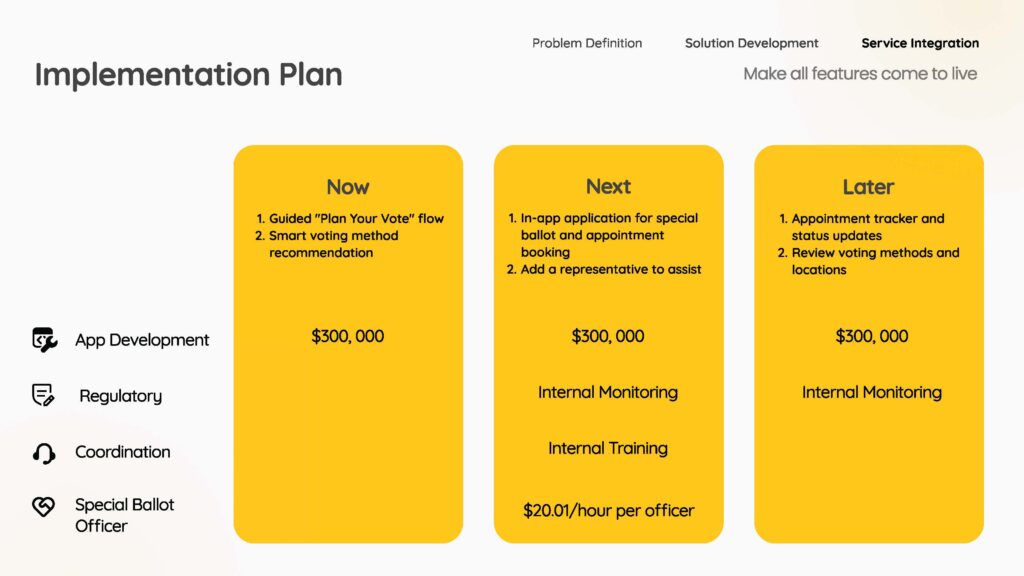System Designer
Data Analyst
UX Designer
Time: Spring 2025
Course Project: Graduate course – INF2224H Service Design, University of Toronto
Role: Service Designer
Team Members: Kellie Hung, Chloe Yuan, Ruonan Lu, Xinglong Zhou
My contribution: service mapping, user persona development, future-state journey design, and led the storyboarding and interface concept visualization for the voting assistant features.
This project was a collaboration with Elections Ontario, where our team was tasked with redesigning the home and hospital voting experience to ensure equity, privacy, and accessibility for voters with disabilities or limited mobility.
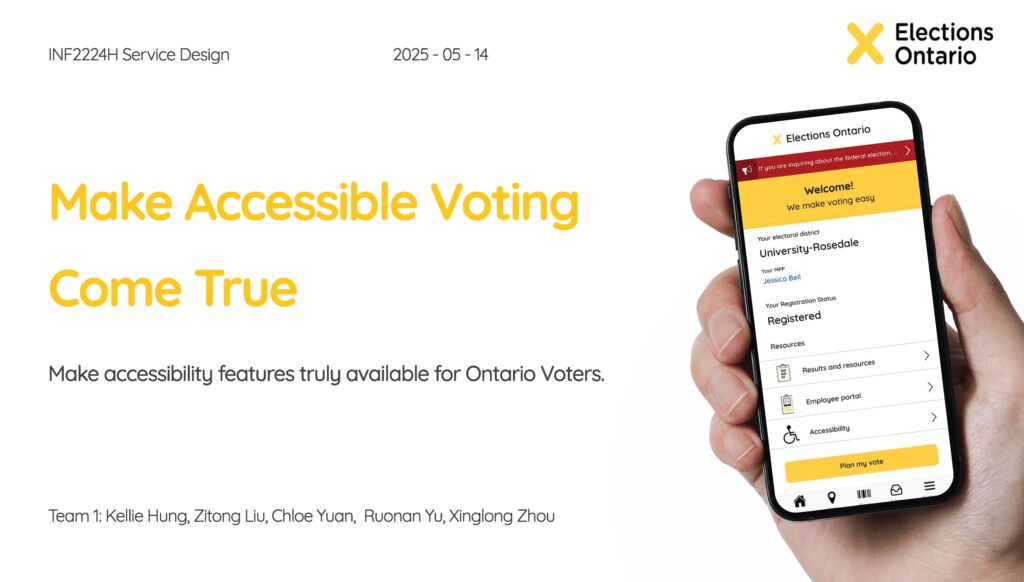
· Only 10% of eligible voters currently use accessibility services, despite 27% having accessibility needs
· Voters face fragmented information and lack clarity about eligibility and procedures
· Channels like phone and email are not accessible for many seniors or hearing-impaired users
· Users lack confidence in whether their vote was submitted and counted
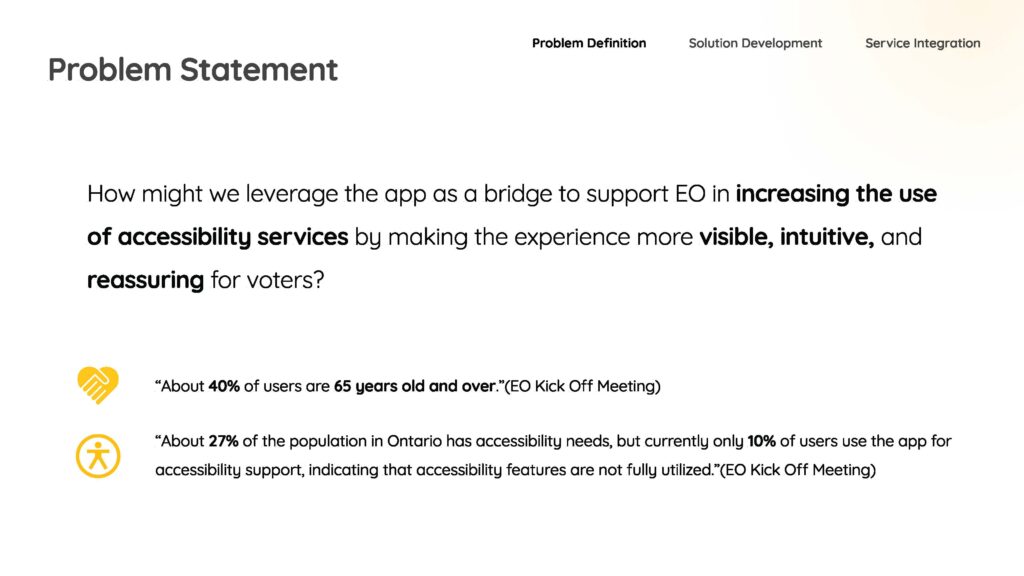
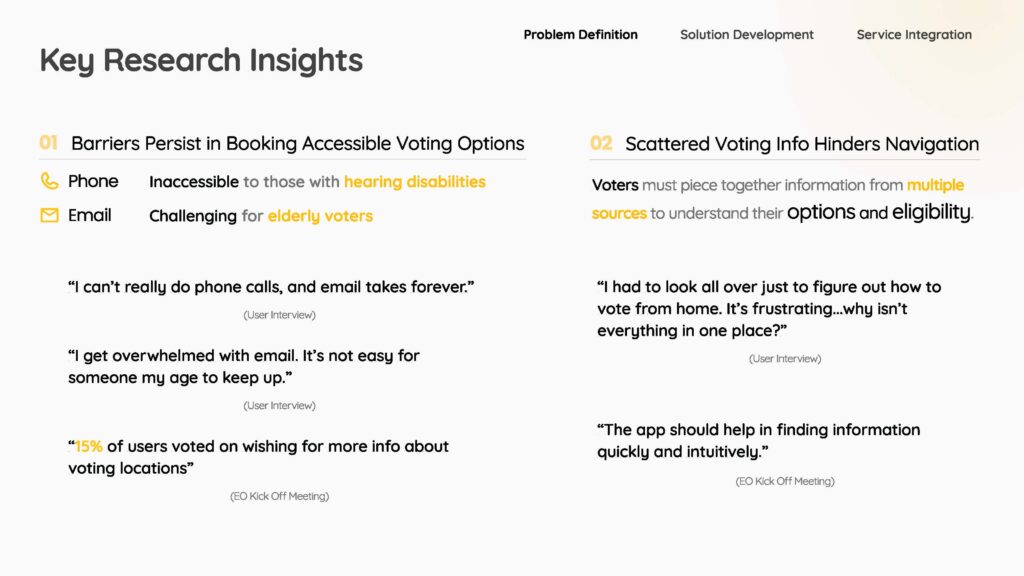
We began by mapping out the full service outcome to identify all key actors (Users & Service Provider) and their interdependencies. This provided a systems-level understanding of the voting service.
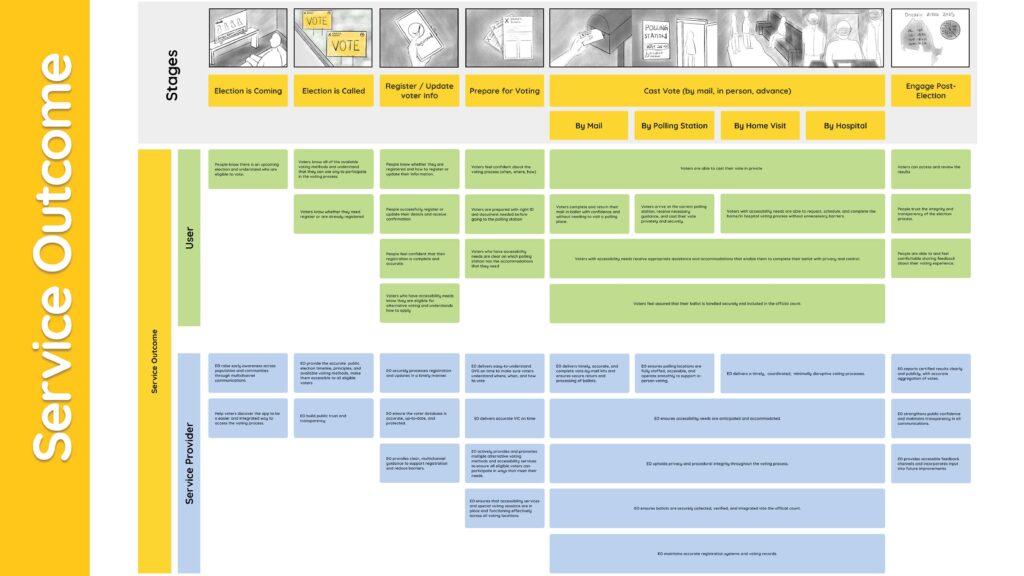
We mapped the current home voting experience based on interviews and policy review, identifying pain points such as fragmented communication and unclear booking flows.
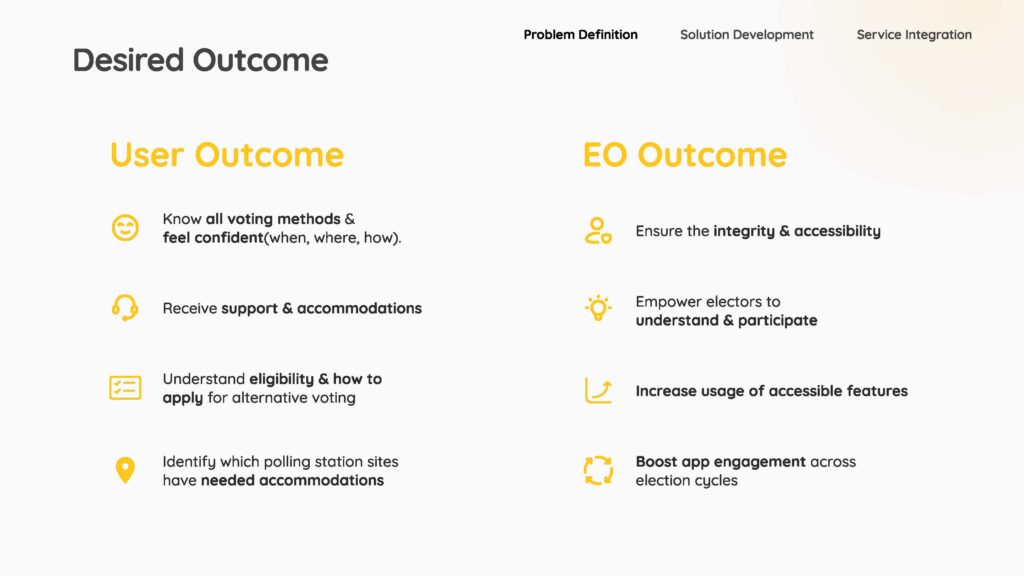
Our service Map visualized the frontstage and backstage interactions, technology, and internal processes. This helped us uncover systemic gaps and design opportunities.
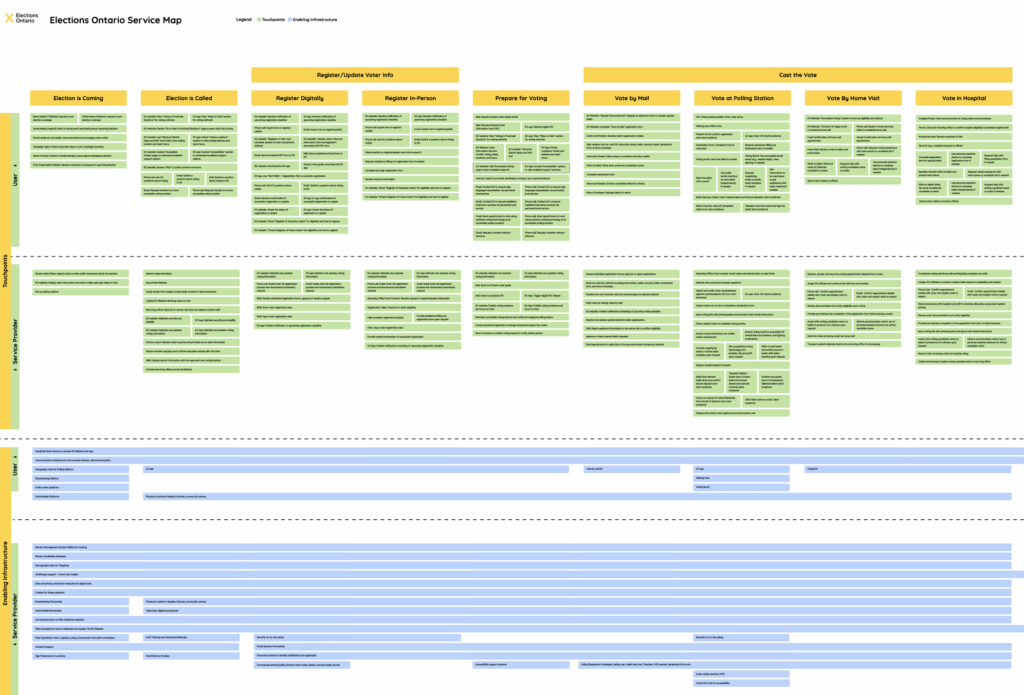
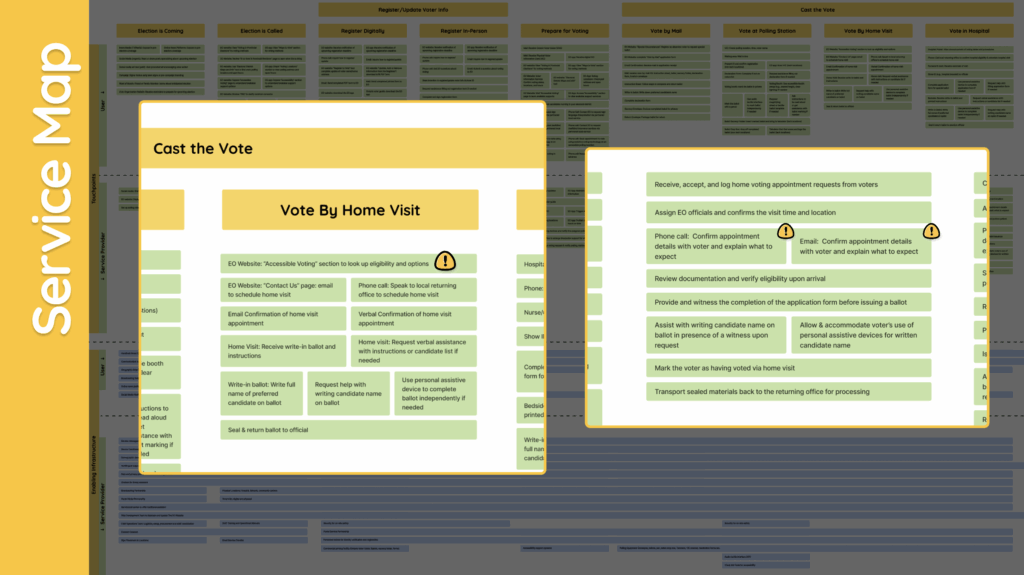
We developed representative personas like “Margaret”—an elderly, low-digital-literacy but highly engaged voter—who helped ground our design decisions in real user needs.
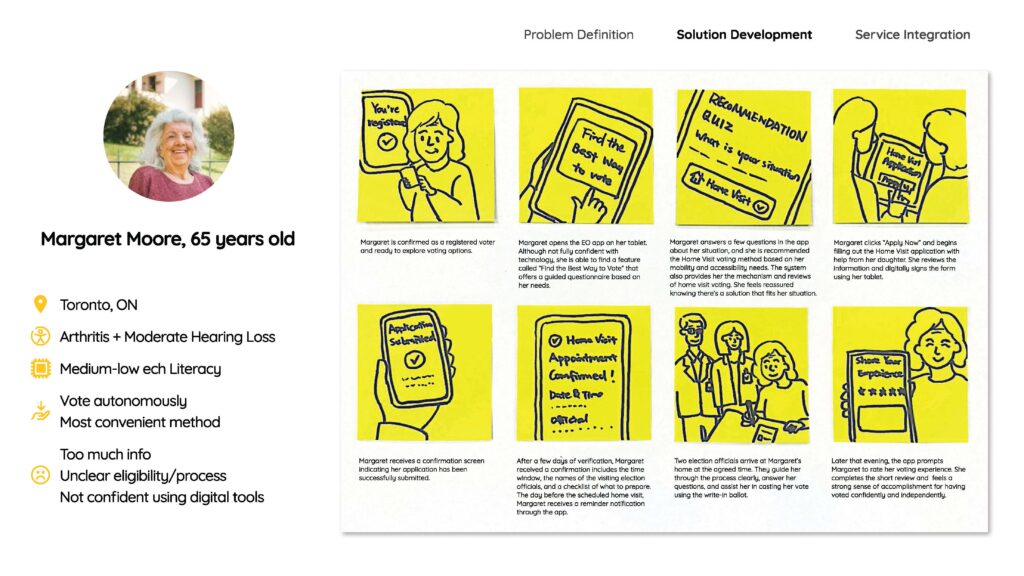
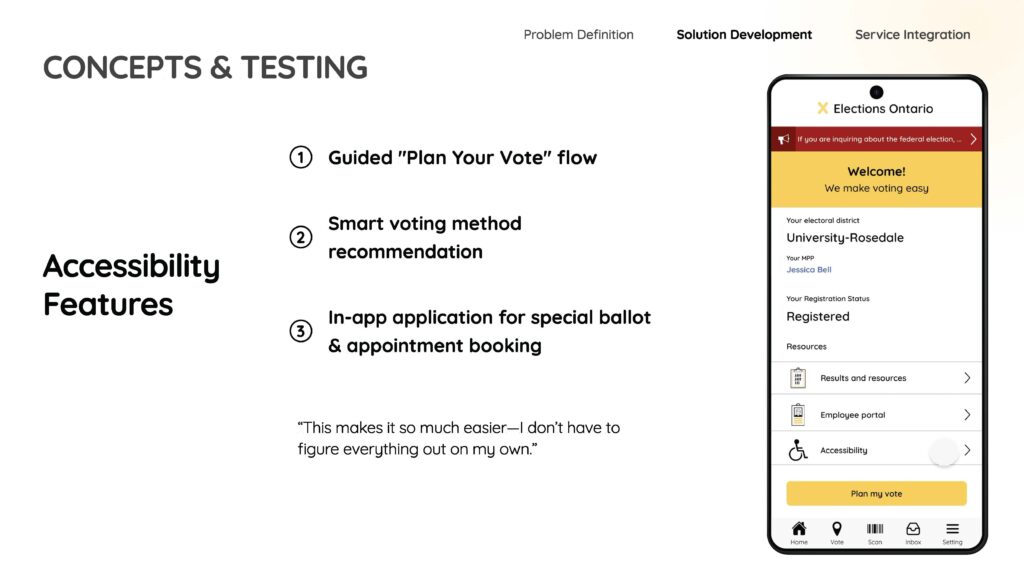
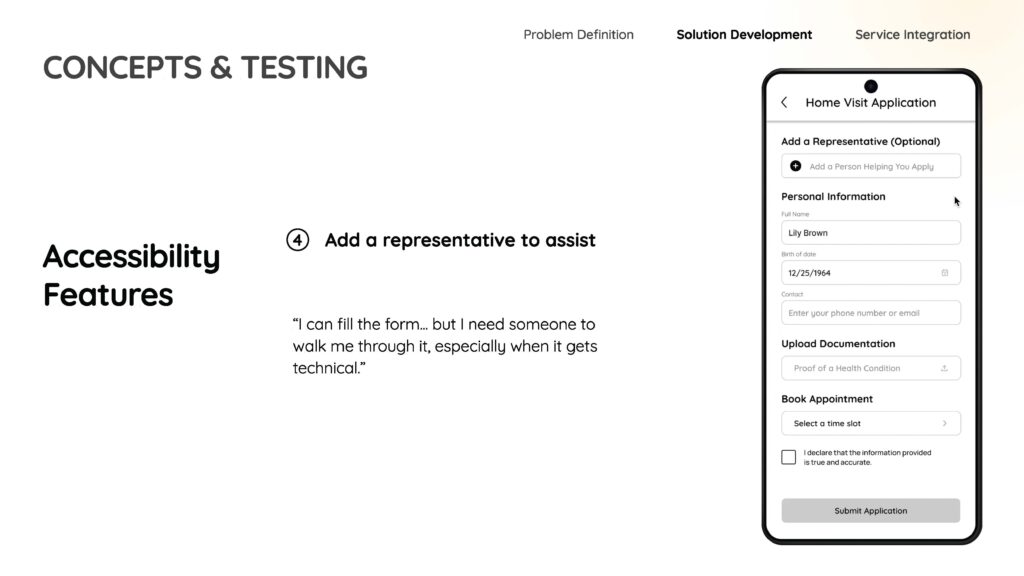
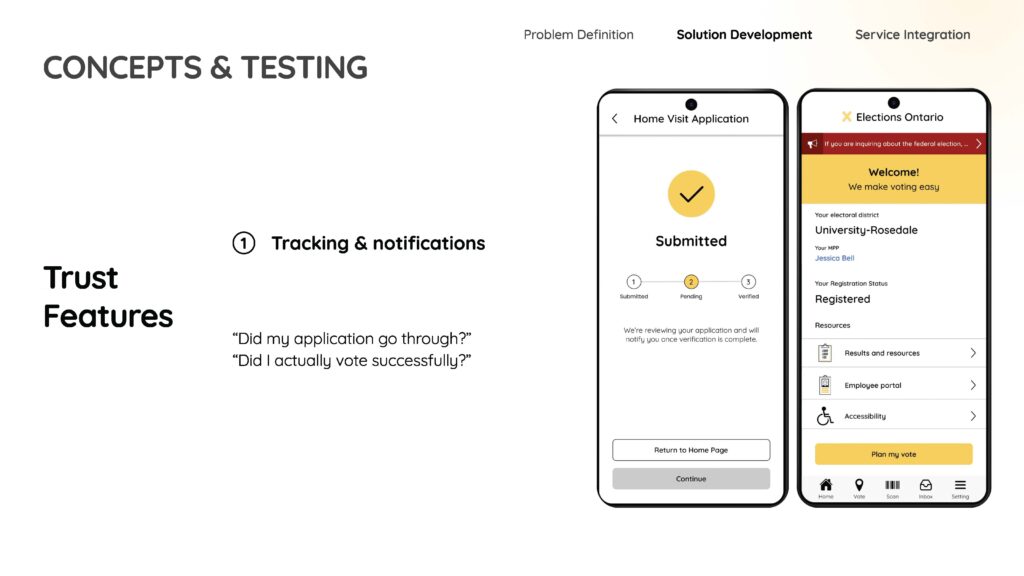
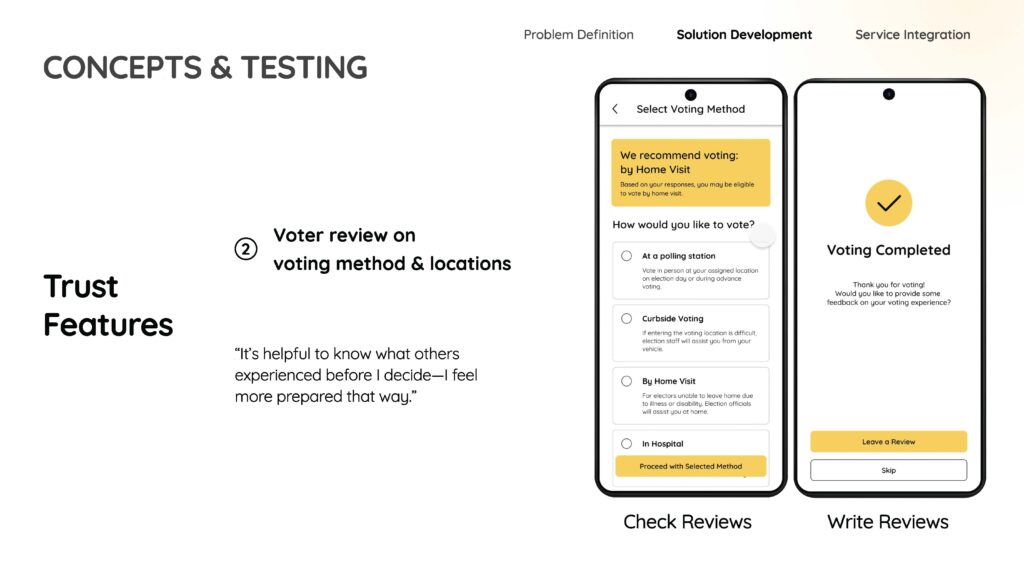
To evaluate the impact of our proposed accessibility improvements, we defined the following key success metrics:
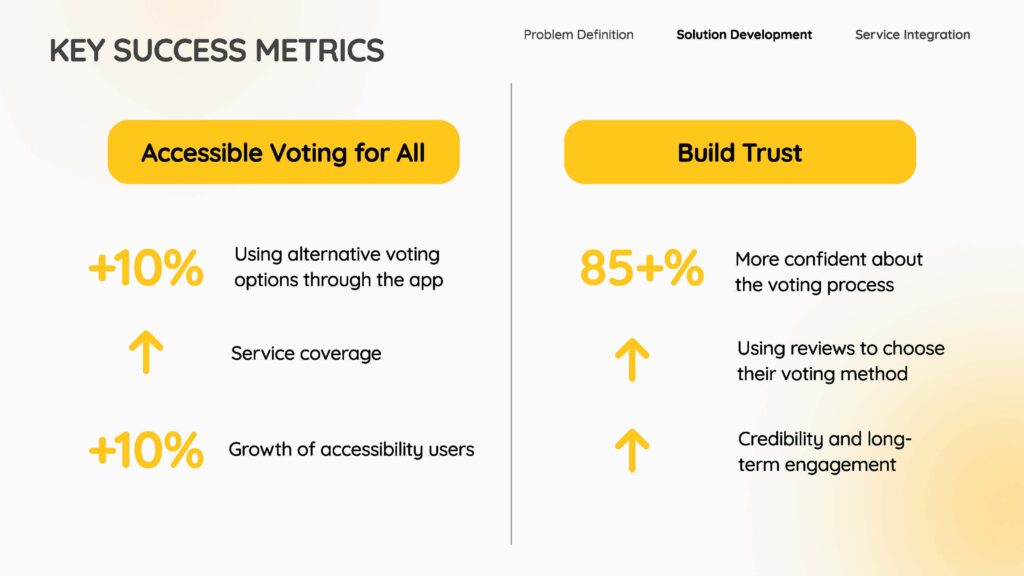
To bring our service concepts to life in a sustainable and scalable way, we proposed a phased implementation strategy across three stages: Now, Next, and Later.

